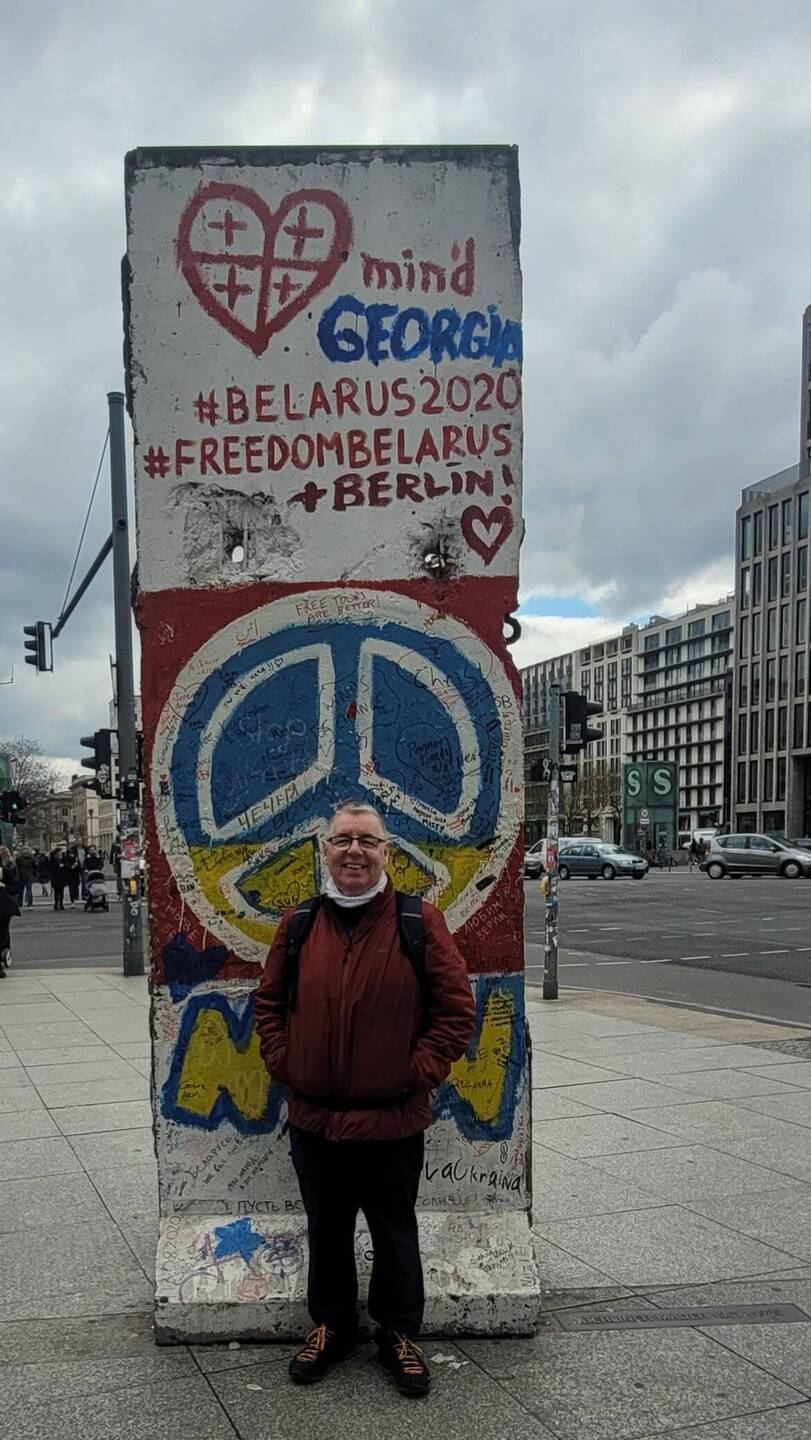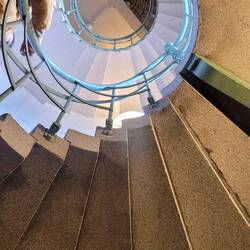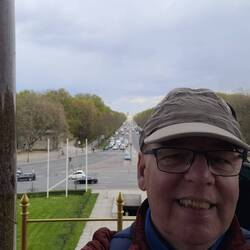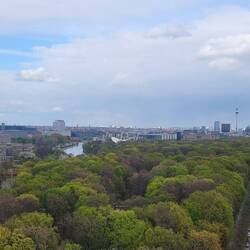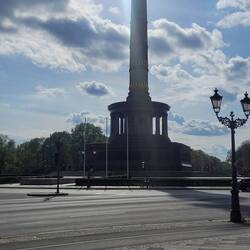Tränenpalast
 April 26, 2023 in Germany ⋅ ☁️ 11 °C
April 26, 2023 in Germany ⋅ ☁️ 11 °C
I woke early, well before anyone else was up, so I just lay in bed for a while and read and reflected on the trip so far. I thought back to the camino last year and how we all met, and how much it had changed me. When I started on the camino I was full of anxiety about, well, everything, and to be fair I had had a terrible two years prior to going. On the camino I learned not to be afraid, not to worry about what tomorrow would bring, but to always focus on the task at hand, and importantly, to enjoy that moment.
I had been a little bit concerned about travelling to and from Berlin, as I had never been before and I do not speak German, but like the camino my concerns were misplaced. To begin with, in Berlin everyone and their dog speaks English, and everyone seems friendly and willing to help. Secondly, last night over dinner we talked about travelling home, Anita and Rob's travel arrangements were a bit more complicated than mine. Anne was of course, brilliant and helpful and she sorted out their train itinerary and also told me what train to get back to the airport and what platform and time etc. so I was much more relaxed about it.
Also, it turned out that everyone would be leaving well before me on Sunday, and there was a chance that I could stay in the apartment until late afternoon which would save me walking around the city with my suitcase trailing behind me. I was also hopeful that I would be able to spend the day with Mirjam, and that she would come to the station with me.
We got the train to Potsdamer Platz, and wandered over to the Reichstag where we booked tickets for tomorrow to go up to the dome, its free but you have to book, and you need ID in order to book. It is a working parliament building so there is a security process to go through, but it is not onerous.
Since we were there we went for a long walk around that area, and found ourselves at the Victory Column, as it is in the centre of a large roundabout it is accessed by a series of tunnels, so we went in, paid a few euros and started the long ascent up a narrow, spiral stone staircase that would take us to the top. There were a lot of stairs, I lost count, and there were several landings each with a bench, and there was always someone resting on it. It was a strenuous climb, and I saw a few people that looked in need of a paramedic. The view from the top was spectacular and gave a real sense of the enormity of Tiergarten, it was definitely worth the climb.
We got on a bus back into the centre and went to Tränenpalast museum. It was originally Friedrichstraße Railway Station, a train station like any other, but it was the station where the GDR and West Berlin met. It was here that people said goodbye to family and friends before going through the passport control, sometimes never to return. It was a place of sorrow and tearful goodbyes and so it acquired the nickname Tränenpalast, The Palace of Tears. Only passengers who wished to travel to West Berlin on the S-Bahn or U-Bahn could access the Tränenpalast. Policemen checked passports and visas, customs officers checked luggage and finally passports were checked thoroughly once more before onward travel was permitted.
The station had been converted to a museum recording this history of the place and setting it in the wider context of European history at the time. It was fascinating and quite moving. One exhibit showed a suitcase of crockery that a family had buried on their farm before moving to the West, after the collapse of the GDR and the Wall, they went back and dug it up.
We walked along to the Kaiser Wilhelm I Memorial Church, built buy his grandson Kaiser Wilhelm II between 1891 and 1895. Apparently, the church bells were the second largest in Germany and when the church was inaugurated, the five bells rang so loudly that the wolves in the zoo started howling. The bells were melted down during the 2nd world war for munitions.
It is a very striking building, although originally built in the Neo-Romantic style it looks very different today. It was badly damaged by bombing during the war and remained untouched until 1956 a plan was put forward to demolish it, which led to a public outcry, a compromise was reached and along with some repair work a new annexe was completed in 1961
According to the display information:
"The design consists of concrete honeycomb elements with stained glass inlays. Inside the octagonal nave, the stained glass produces a rich blue light and an atmosphere of meditative calm. The memorial hall in the old spire is now a memorial against war and destruction and a symbol of reconciliation. It also contains a crucifix made of nails from the burnt roof timbers of Coventry Cathedral, which was almost completely destroyed by bombs in 1940. The crosses of nails from Coventry, which are also in Dresden, Hiroshima and Volgograd, are a symbol of reconciliation."
As well as a symbol of reconciliation it remains a working Lutheran Church, and concert venue, especially for jazz (I have no idea why it is especially for Jazz). It is a fascinating place. On the one hand the interior of the old church has a beautiful mosaic of ruling dynasty of the time, a classic example of Christendom's marriage of Church and State, it was there to remind the proletariat of Wilhelm's divine right to rule. Yet It is also a place of prayer and contemplation, a symbol of a desire for peace. Yet just down the street is where a religious zealot deliberately drove a truck into pedestrians at a Christmas market. I guess the need for such places never diminishes, they never become irrelevant.
I was glad Anne brought us here.
Anne went to stay with a friend and Rob and Anita and I managed to get back to the apartment all by ourselves, we had a great dinner of leftovers - no really it was great, and a quiet night it. It had been a busy day. The only downside was that Mirjam wasn't with us today, but then, there's a saying about absence...Read more

